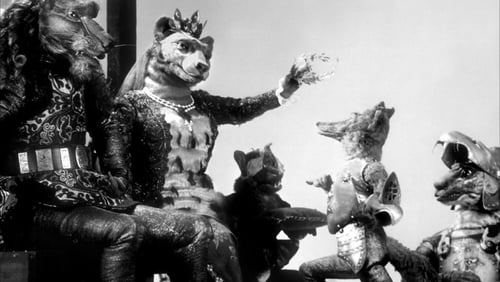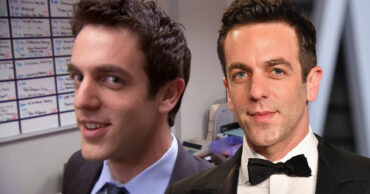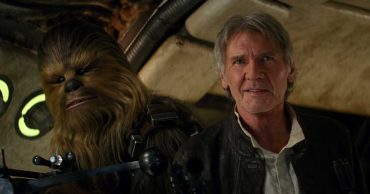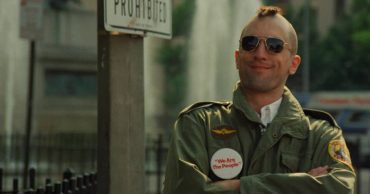
Like all great filmmakers, Wes Anderson is a voracious cinephile, bringing together many different influences to shape his own unique style. Over his long and varied career he has borrowed from many filmmakers – his love of Rolling Stones tracks set to slow-motion sequences from Martin Scorsese, his sense of colorful spectacle from Jacques Demy and his oddball sense of adventure from Orson Welles.
Side-by-side analysis of certain shots also shows that he directly lifts scenes from other movies – the opening candle-filled credits of The Royal Tenenbaums evokes The Red Shoes while the scene of Willem Dafoe on a motorcycle in The Grand Budapest Hotel is a reference to Lawrence of Arabia.
In turn Anderson’s fussy frames have influenced the mainstream, especially in television adverts as well as Jojo Rabbit and the Paddington films. What’s less explored are the fairly obscure works that his own films evoke, which are Andersonian in spirit due to their naive style and controlled aesthetic. Spanning from classic Soviet comedies to Swedish summer romances to stop-motion classics, we have an essential list for you to peruse today. Read on now to see what we picked.
12 Chairs (1971)
In recent years, Anderson has become particularly adept for his farcical action sequences and the way they express the viewpoints of his one-track schemers. Fans of this style can’t go wrong with 12 Chairs, which is a true exemplar of the Soviet Union’s manic-comic style in the 60s and 70s. Telling the story of two men hunting a huge fortune hidden in one of twelve chairs, it is a madcap adventure across Russia that is as entertaining as it is aesthetically pleasing.
While Mel Brooks adapted the same novel just a year earlier, we believe that the Leonid Gaidai version is more in keeping with Anderson’s spirit. Gaidai was the master of the protracted chase scene, which at their very core feel like live-action Scooby Doo sequences. Additionally, the scenery, including kitsch 19th century Russian architecture, bedecked in pastel-colors, the fussy interior designs and the campy costume design make this feel like a true proto-Andersonian tale.
Welcome, or No Trespassing
Elim Klimov’s Welcome, or No Trespassing, made in the height of the Nikiti Kruschev era, is a rip-roaring critique of communism hidden through the guise of a mere children’s movie. It takes place in a young pioneer camp, multiple scenes of children playing by the lake, tracked with lateral camera movements, a clear pre-cursor to Moonrise Kingdom. When Kostya swims out too far, he is reprimanded and sent packing home to his grandmother.
But deep down Kostya is a good boy, and is too afraid that his grandmother will die of a heart attack if he reveals that he got sent home. So he sneaks back into the camp and hides from the authorities, relying on the kindness of the other children. The result is a deeply inspired, hilarious parody of communist attitudes that put director Elim Klimov on the map.
Summer with Monika
Welcome, or No Trespassing isn’t the only film that Moonrise Kingdom seems to be influenced by. Before Ingmar Bergman rocked the world with his duo of existential dramas Wild Strawberries and The Seventh Seal in 1957, one of his first successes was the naturalist tale of Summer with Monika.
Telling the story of Harry (Lars Ekborg), a young man stuck in a boring job, he jumps at the chance to steal his father’s boat and spend the summer in the Stockholm archipelago with the beautiful Monika (Harriet Andersson). While these teenagers are much older than the ones in Moonrise Kingdom – Andersson even takes her kit off (revolutionary in 1953) – both films share a similar sense of adventure as well as an idealised concept of building a world apart from bossy adults. For one thing, Bergman would never make something quite so pure again.
Closely Watched Trains
The entire aesthetic of The Grand Budapest Hotel can be described as simply Central European chic. And whether its pastel-colored houses, spa resorts, small towns nestled within mountains, and a strange blend of Empire and Soviet aesthetics, Czech Republic really has it all.
Like their whimsical architecture, the Czech Republic has a mischievous sense of humor all of its own. Czechoslovak New Wave film, Jiřà Menzel’s Closely Watched Trains is a masterpiece of this “naive” humor, telling the story of a young man becoming a train station guard. From the very opening scenes – with its plain voiceover, insert shots of old paintings, and jokes about Czech history – we feel like we’re in a truly Wes Anderson-like world. The rest of the film concerns the young man’s love for a train conductor, leading to a variety of whimsical situations. Yet there are darker themes afoot: by contrasting this naive humor against the backdrop of the Nazi occupation, Closely Watched Trains is an obvious influence for The Grand Budapest Hotel.
The Tale of the Fox
Before The Fantastic Mr. Fox there was The Tale of the Fox. The first feature film from master animator Ladislas Starevich, this stop motion tale, released in 1937, was the second puppet-based film ever made. Based on the tales of the legendary Renard the Fox, it tells of a legendarily mischievous fox who no one can seem to tame, forcing the King Lion to try and bring him to justice.
In both style and content, this film is an obvious inspiration upon The Fantastic Mr Fox, which also has a mischievous yet inherently likable canine at the center. Wes Anderson would also return to the world of stop-motion with Isle of Dogs, which also betrays a certain inspiration from the amazing animal-based work of Ladislas Starevich.
For further animated creatures that could be categorized as living within the Wes Anderson sphere, we recommend both the Czech Krtek, a cute mole with lots of friends, and the Russian Cheburashka, a large-eared stop-motion creature who is an iconic of Soviet animation.
 Follow Us
Follow Us





